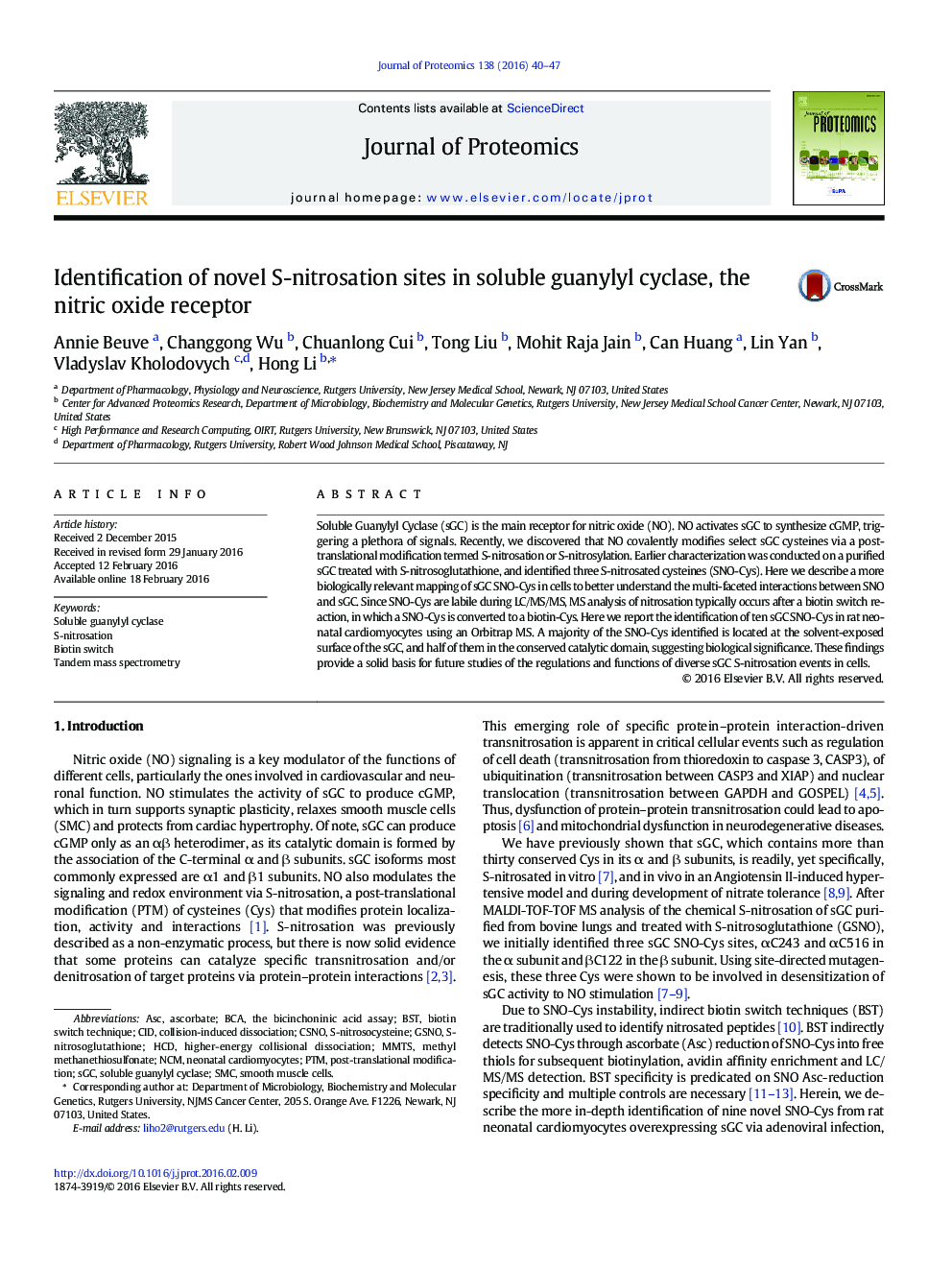| Article ID | Journal | Published Year | Pages | File Type |
|---|---|---|---|---|
| 1225291 | Journal of Proteomics | 2016 | 8 Pages |
•Ten mammalian sGC SNO-Cys sites, including nine new ones, were identified in cardiac myocytes.•The SNO-Cys are conserved, and are mostly solvent-exposed, suggesting functions in protein-protein interactions.
Soluble Guanylyl Cyclase (sGC) is the main receptor for nitric oxide (NO). NO activates sGC to synthesize cGMP, triggering a plethora of signals. Recently, we discovered that NO covalently modifies select sGC cysteines via a post-translational modification termed S-nitrosation or S-nitrosylation. Earlier characterization was conducted on a purified sGC treated with S-nitrosoglutathione, and identified three S-nitrosated cysteines (SNO-Cys). Here we describe a more biologically relevant mapping of sGC SNO-Cys in cells to better understand the multi-faceted interactions between SNO and sGC. Since SNO-Cys are labile during LC/MS/MS, MS analysis of nitrosation typically occurs after a biotin switch reaction, in which a SNO-Cys is converted to a biotin-Cys. Here we report the identification of ten sGC SNO-Cys in rat neonatal cardiomyocytes using an Orbitrap MS. A majority of the SNO-Cys identified is located at the solvent-exposed surface of the sGC, and half of them in the conserved catalytic domain, suggesting biological significance. These findings provide a solid basis for future studies of the regulations and functions of diverse sGC S-nitrosation events in cells.
Graphical abstractFigure optionsDownload full-size imageDownload high-quality image (294 K)Download as PowerPoint slide
